
Respiratory System Oxygen in; carbon dioxide out

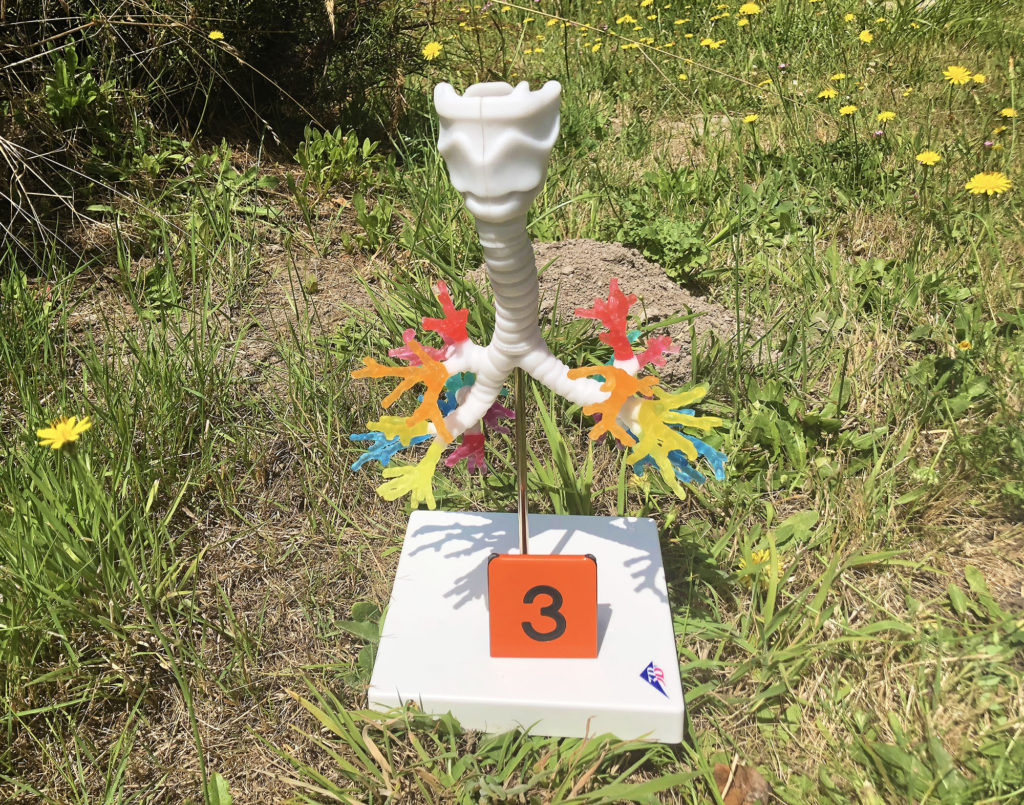
Respiratory System Objectives
- Describe cellular respiration, including where it occurs in cells and how it contrasts with systemic respiration.
-
List the organs gases pass through when you breath in and out, including the pharynx, larynx, trachea, and lungs.
-
Outline the functions of lung structures, including the bronchi, bronchioles, and alveoli.
Humans have to consume other organisms as a source of energy and nutrients. We’re going to focus first on how cells convert sugar molecules into usable energy.
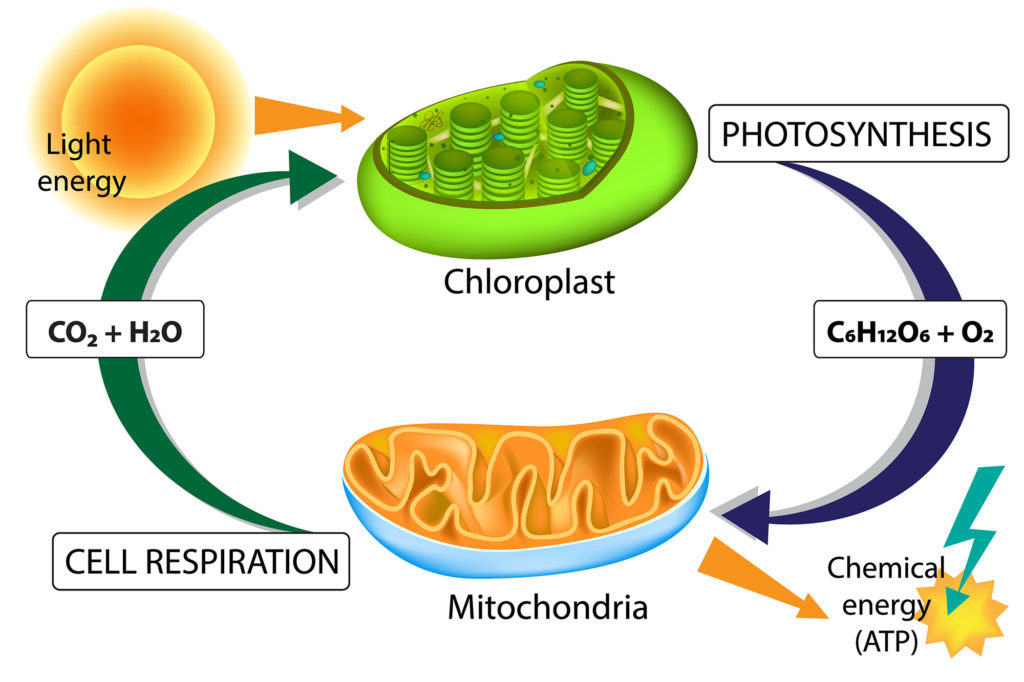
In the process of photosynthesis, plants, algae, and some bacteria can convert carbon dioxide and water in the presence of sunlight into sugar and oxygen. This primarily occurs in plant (or algae) chloroplast organelles.
They immediately use some of that sugar and oxygen to power cellular activity in the process of cellular respiration. This occurs in the mitochondria organelles.
Fortunately for us, plants (plus algae, and some bacteria) produce excess oxygen and have sugar in their bodies that we are able to consume.
Our own mitochondria also carry out cellular respiration; converting sugar and oxygen into usable ATP energy. Water that is produced is recycled by the cell for other uses. And carbon dioxide that is produced has to be eliminated by the body.
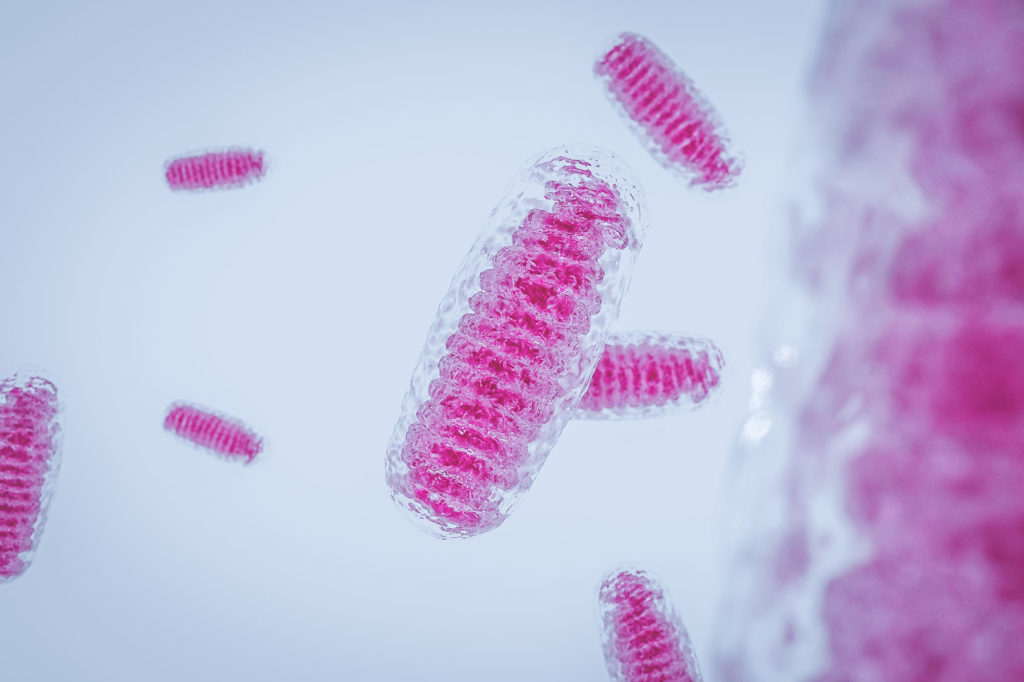
Respiration occurs in both plant and animal cells. In animals, tissues and organs are required to obtain the oxygen and sugar that plants can make for themselves.
This video provides an overview of cellular respiration.

Mitochondria in all complex-celled organisms, and chloroplasts in plants and algae, resemble free-living bacteria. The endosymbiotic theory states that mitochondria and chloroplasts in cells separately originated from one bacterial species engulfing (but not digesting) another.
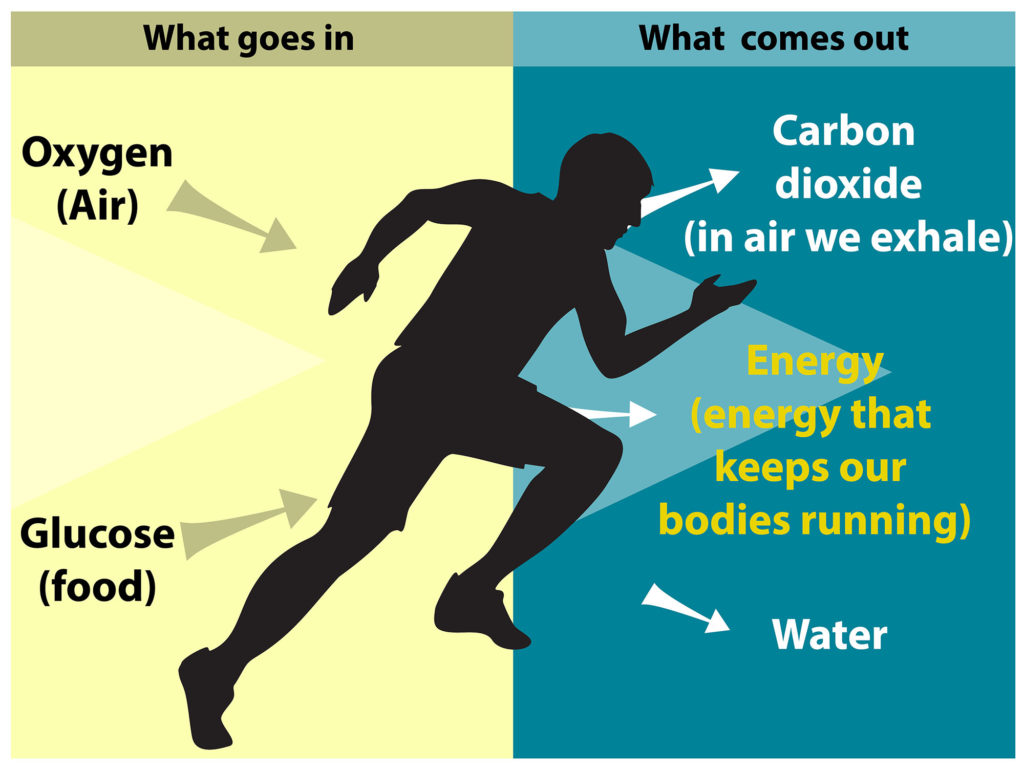
The respiratory system is responsible for getting oxygen into the body and carbon dioxide out.
Multiple organ systems play a role in supporting cellular respiration:
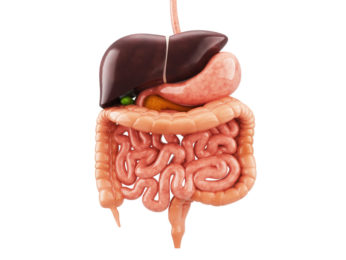
Digestive System
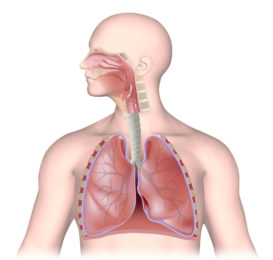
Respiratory System
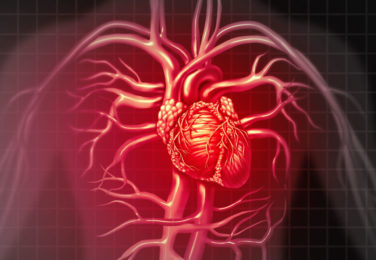
Cardiovascular System
Cellular Respiration: cells converting oxygen and sugar to ATP energy (and carbon dioxide and water).
Systemic Respiration: the process of breathing air in and out, the work done by the respiratory system.
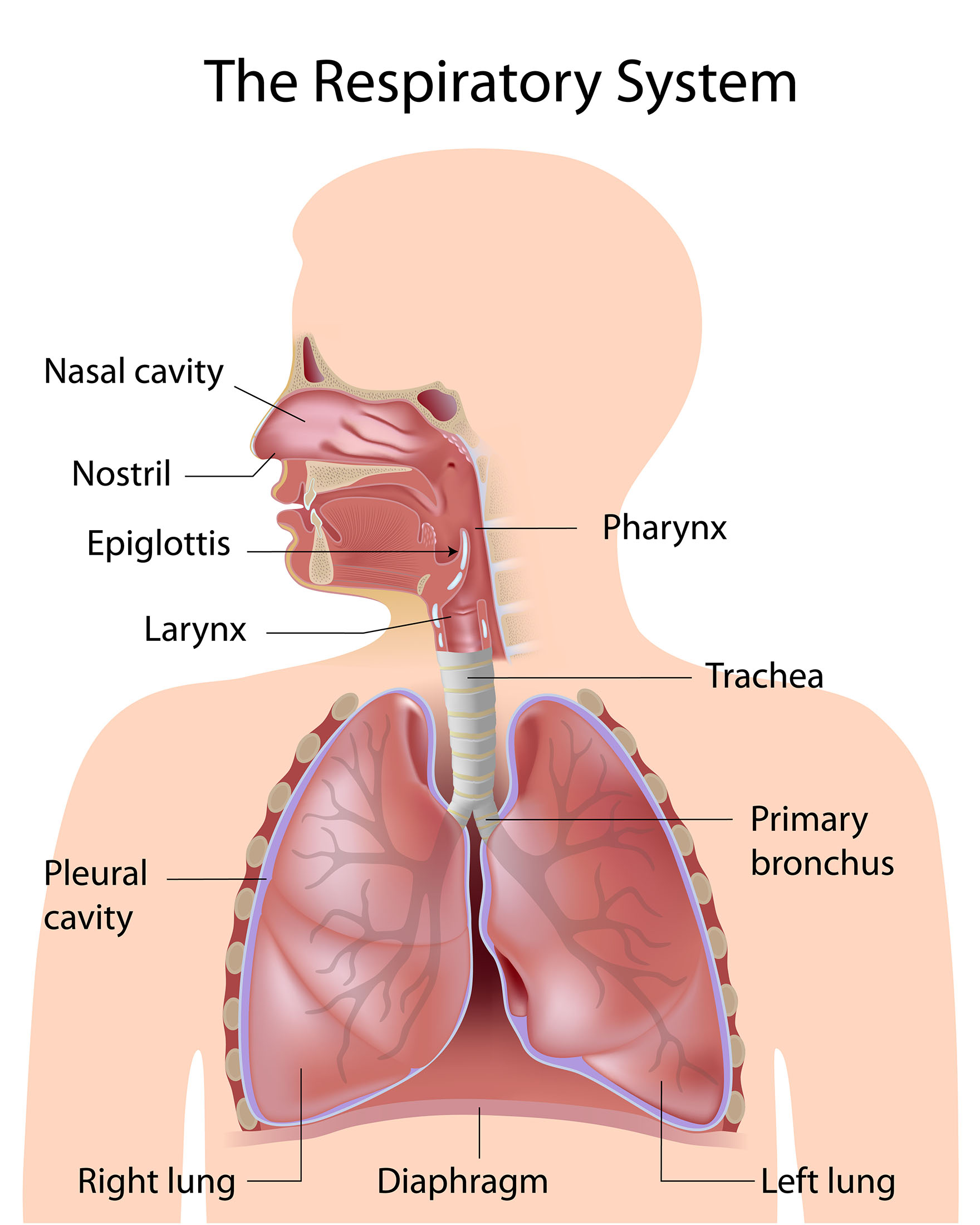
The primary respiratory system function is relatively straight forward: move oxygen-rich air into the body and remove carbon dioxide.
This is a look at the path of air through the repiratory organs.
This model provides a more detailed view of the respiratory organs, including the larynx.
The trachea branches into primary and secondary bronchi, sometimes called the “bronchial tree.”
The lungs consist of the bronchi, bronchioles, alveoli, and many blood vessels.
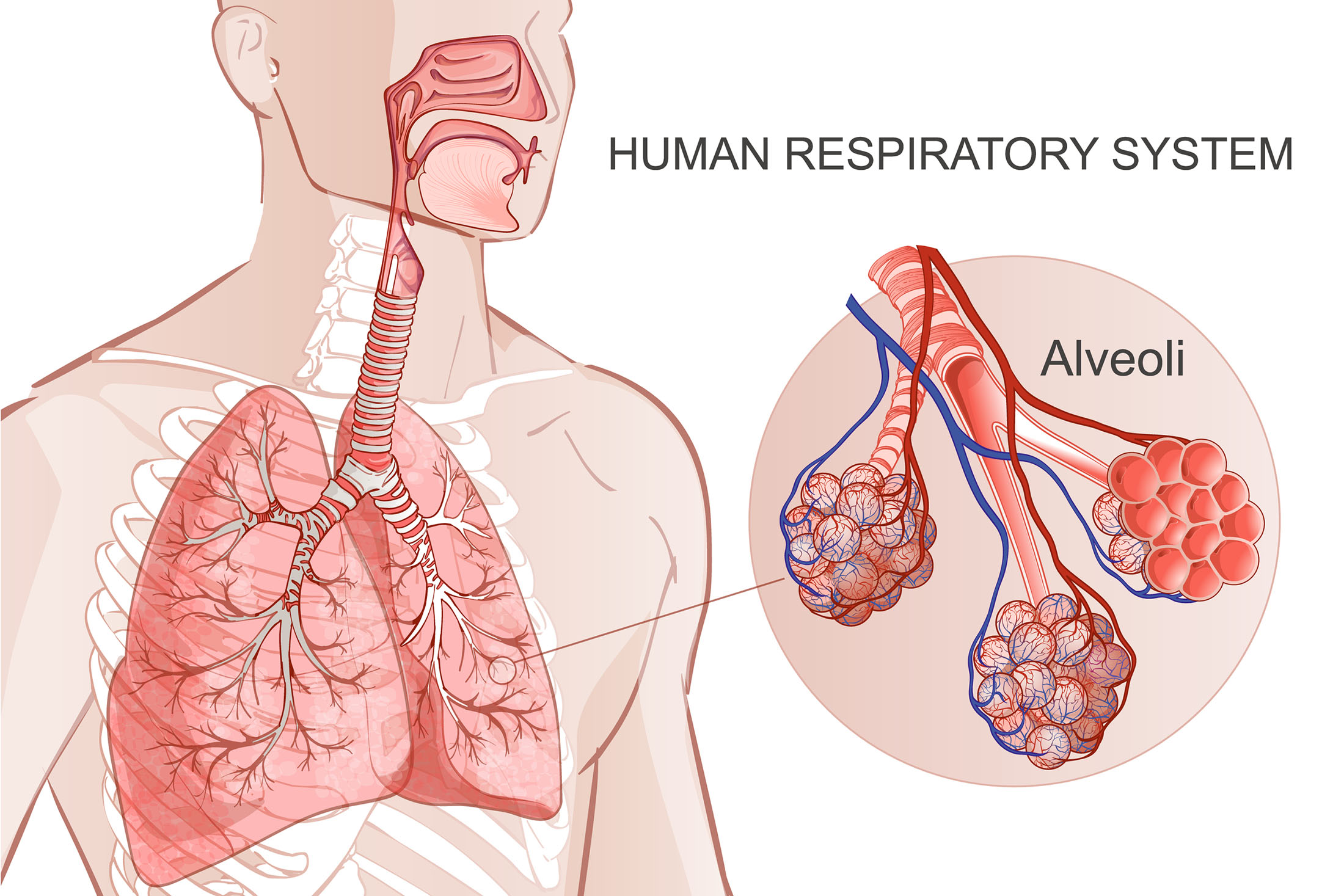
Most of the respiratory organs are tubes moving gases into and out of the alveoli. What do the alveoli do that is so important?
Each alveolus has a little fluid surfactant lining it, which improves gas diffusion. If you are in a desert or dry sauna, you may find it harder to breath. Loss of surfactant through evaporation as we breath out reduces the rate of gas exchange with the capillaries.

Check your knowledge:
The lining layer on the inside of the trachea is a special type of columnar _____ tissue. It has _____-producing cells that make a sticky fluid that can trap dirt and potential pathogens. Other cells have hair-like _____ that can move the mucus up the trachea to be swallowed down the esophagus and destroyed by stomach acids and enzymes.
The trachea branches into two primary _____, tubes. The primary and secondary bronchi branch into even smaller tubes called the _____. The bronchioles dead-end into _____, ballon-like sacs that exchange gases with small blood capillaries (vessels).
Start this Guide’s second journal assignment here
Journal Page #6: Body Data
We are continually monitoring our body parameters. For example we change behaviors when we get hot or cold, eat when we are hungry, or go to sleep when tired. However, we typically do not collect body data in a consistent manner unless we are managing a disease or engaged in a dietary or exercise program.
For this journal page you are collecting two forms of body data at three points in a single day. For example, you could monitor heart rate and respiration rate at 9 a.m. 1 p.m. and 5 p.m.
You get to choose the form of data. Easy to collect data includes:
- breathing rate (respirations/breaths) per minute.
- heart rate (beats per minute)
- body temperature
- urination frequency
- thirst (feeling of thirst)
Note: Use sense and care whenever collecting body data. If unsure about techniques or how to interpret results, seek professional assistance as needed.

You are turning in:
- Your body data which includes two different types of data collected at three different times in a single day.
- Your interpretation of the data, including what you found and what you think it means. If you see a relationship between the two forms of body data collection, include that as well.
The next section provides an overview of respiratory disorders.
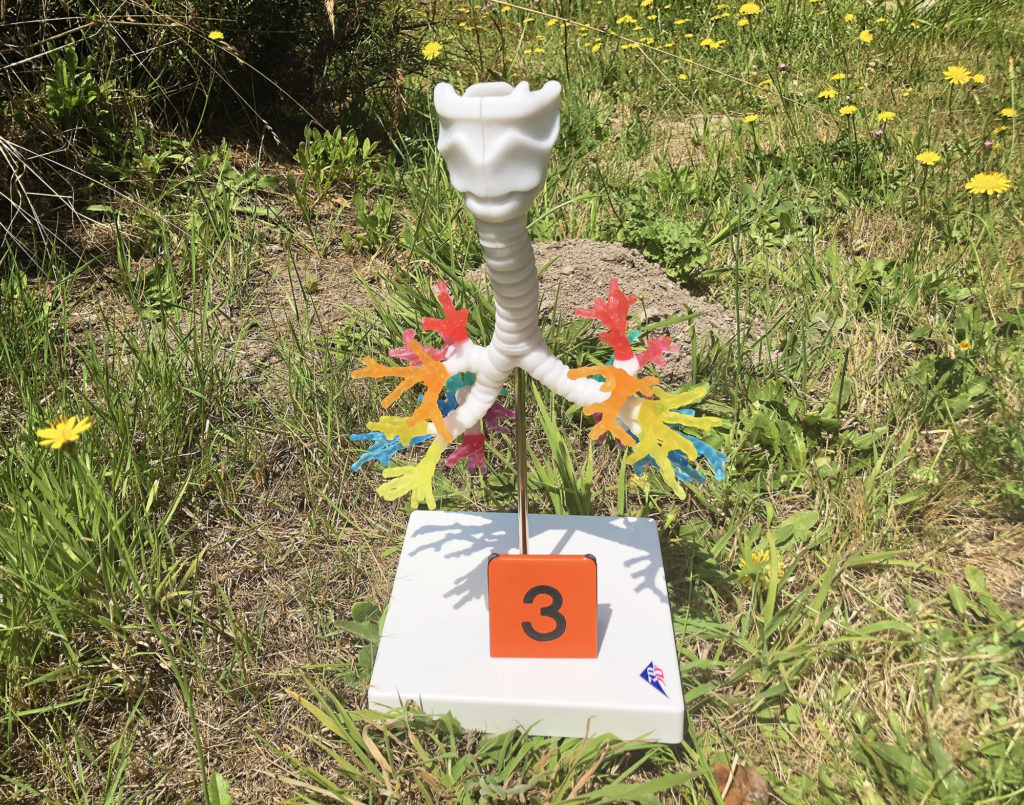
Check your knowledge. Can you:
- describe cellular respiration, including where it occurs in cells and how it contrasts with systemic respiration?
-
list the organs gases pass through when you breath in and out, including the pharynx, larynx, trachea, and lungs?
-
outline the functions of lung structures, including the bronchi, bronchioles, and alveoli?



